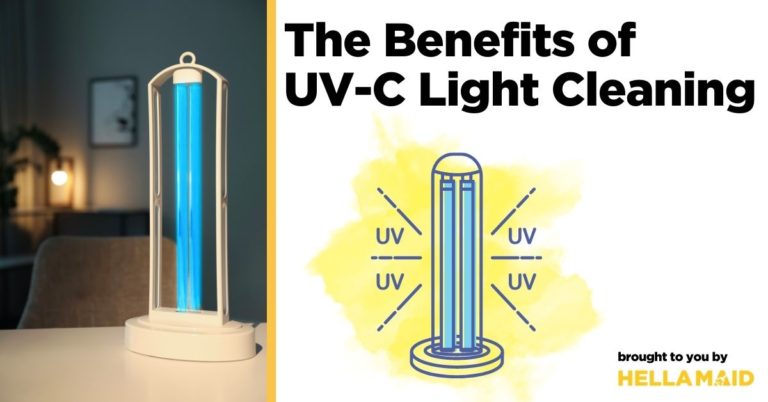Uvc Light Fundamentals Explained
Table of ContentsHow Uvc Light can Save You Time, Stress, and Money.The Single Strategy To Use For Uvc LightThe Ultimate Guide To Uvc LightSome Known Incorrect Statements About Uvc Light The Uvc Light DiariesUvc Light Things To Know Before You Buy
A new kind of ultraviolet light that might be safe for people took much less than 5 minutes to decrease the level of interior airborne microorganisms by more than 98%, a joint research study by researchers at Columbia College Vagelos College of Physicians and Surgeons and in the U.K. has discovered. Also as germs continued to be splashed right into the room, the degree remained extremely reduced as lengthy as the lights were on.But previously these studies had only been carried out in small speculative chambers, not in full-sized rooms imitating real-world problems. In the current research study, scientists at the College of St. Andrews, University of Dundee, University of Leeds, and Columbia University tested the efficacy of far-UVC light in a huge room-sized chamber with the very same air flow price as a common home or workplace (concerning 3 air changes per hour).
The efficiency of various approaches to lowering indoor virus degrees is generally measured in terms of comparable air modifications per hour. In this research study, far-UVC lights generated the matching of 184 comparable air exchanges per hour. This exceeds any kind of various other strategy to decontaminating occupied indoor spaces, where 5 to 20 equal air changes per hour is the most effective that can be accomplished practically.
Some Known Factual Statements About Uvc Light

The main parameters of UV-C sanitation are wavelength, dosage, relative humidity, and temperature level. There is no agreement about their ideal values, yet, as a whole, light at a high dose and a spectrum of wavelengths containing 260 nm is favored in a setting at room temperature level with reduced relative moisture. This light can be produced by mercury-vapour, light-emitting diode (LED), pulsed-xenon, or excimer lamps.
UV-C disinfection systems have appealing attributes and the prospective to enhance in the future. UV-C disinfection need to currently be thought about for low-level instead than high-level sanitation.
One more application occurred in 1910 when UV light was utilized to disinfect water. Nowadays, UV light is utilized for water, air, food, surface area, and clinical tools sanitation.
Facts About Uvc Light Revealed
This results in the disruption of DNA or RNA, leading to the inactivation of the micro-organism. UV-C-induced DNA disturbance commonly is composed of the bonding of 2 neighbouring thymine (or cytosine) bases rather of the traditional connecting of a base with its complementary base on the various other strand.

The UV-C area is made use of for disinfection however there is no consensus on the precise optimum wavelength. Light at 260 nm can cause the most disruption. Different micro-organisms are most susceptible to slightly different wavelengths.
Not known Factual Statements About Uvc Light
It even has an additional benefit by decreasing photoreactivation with a decrease of photolyase [9] On the other hand, it has technical implications since the complete power of the light beam of light is after that split over all present wavelengths. A micro-organism that is at risk my link to 254 nm light will be suspended more by a light that discharges exclusively light at 254 nm than a lamp that emits a wavelength range at equal complete power.
Direct exposure times of 1045 minutes for room sanitation and 25 s to 5 minutes for medical equipment were come across in literature. The intensity is vice versa symmetrical to the made even distance in between the source of light and the surface area and is for that reason specified at the surface area in the dose calculation equation [14]
Further, the outcome of a lamp reduces over time, so linked here it is recommended to calculate the dosage at the end of light life, which is representative of a worst-case situation. The dosage additionally affects the quantity of photoreactivation.
Zhang et al. observed an adjustment in UV irradiance of 34% when the RH enhanced from 50% to 90% [18] The amount of RH influence on UV performance depends upon the existing micro-organism and is more apparent for bacteria than for infections [16] Lastly, the influence of temperature depends on the light source.
What Does Uvc Light Do?


This is referred to as much UV-C innovation and is a fairly new disinfection method with limited knowledge concerning its performance. This makes it riskier to entirely rely upon this innovation for disinfection in the health center and it is as a result not extensively made use of [21] It likewise has benefits such as a reduced threat for use near people due to a reduced site infiltration depth right into the skin and eyes [ 26]
In research study, the outcomes on pulsed versus constant UV-C sanitation effectiveness differ. When comparing pulsed and continual light it is essential to keep other variables such as wavelength and dose constant.
Uvc Light Can Be Fun For Anyone
In instance ozone is not needed for sanitation, a changed light can be made use of. For mercury-vapour lights, drugged quartz glass or specialized soft glass can filter out short-wave UV-C light - uvc light.
Comments on “The 10-Second Trick For Uvc Light”